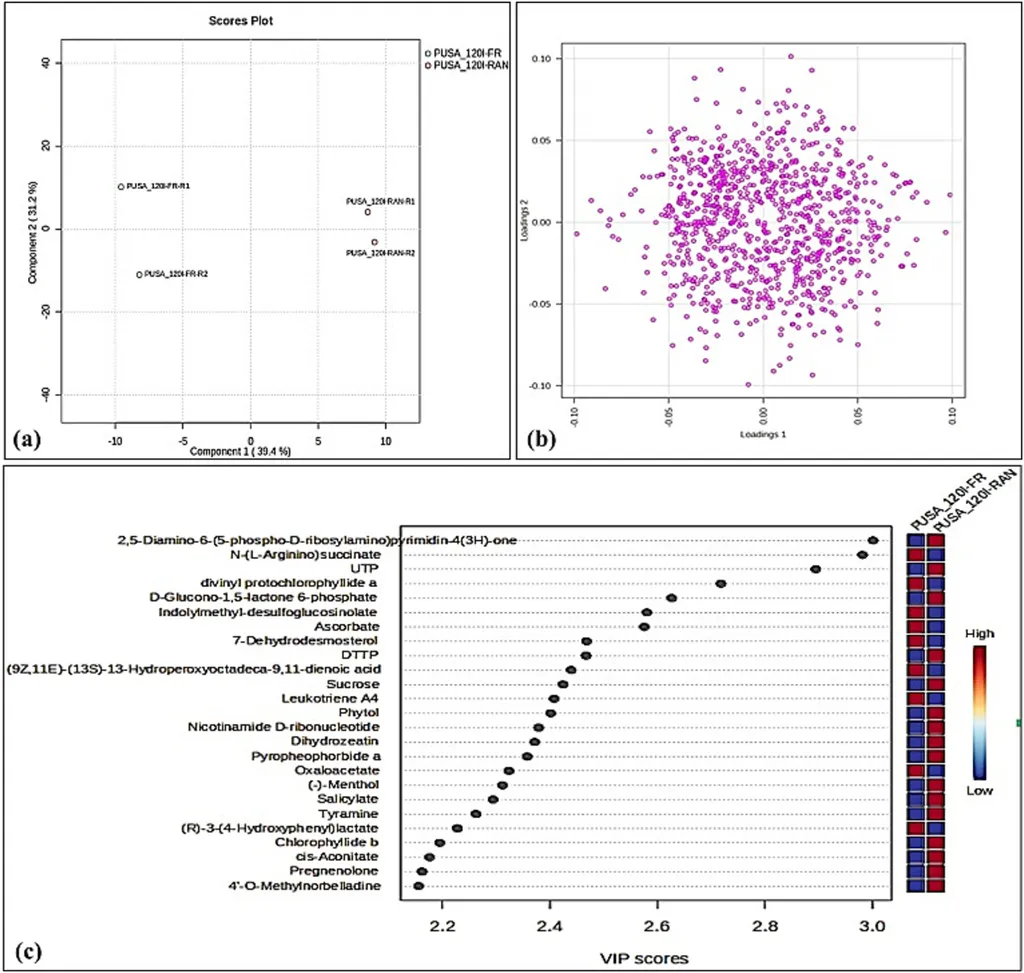In the quest to enhance the shelf life and marketability of pearl millet flour, a team of researchers led by Ranjeet R. Kumar from the Division of Biochemistry at ICAR-Indian Agricultural Research Institute, New Delhi, has made a significant breakthrough. Their study, published in *Frontiers in Plant Science*, delves into the genetic underpinnings of rancidity in pearl millet, offering promising avenues for future breeding programs.
Pearl millet is a nutritional powerhouse, rich in essential amino acids, vitamins, and minerals. However, its susceptibility to rancidity—a process that leads to off-odors and reduced shelf life—has long been a thorn in the side of the agriculture sector. This rancidity is primarily due to the degradation of lipids and starches, but the specific genes and pathways involved have remained elusive until now.
The research team employed de novo transcriptome sequencing, a cutting-edge technique that allows for the comprehensive analysis of all RNA molecules produced by an organism’s genes. By sequencing diverse pearl millet genotypes—including landraces, hybrids, and composites—they identified a staggering 219,965 genes and 386,184 transcripts. Among these, they pinpointed key pathways linked to lipid and starch degradation, shedding light on the molecular machinery behind rancidity.
“Our study provides the first comprehensive transcriptomic resource for pearl millet rancidity,” Kumar said. “We’ve identified candidate genes and enzymatic markers that could be crucial for future breeding programs aimed at improving flour storage quality.”
The team’s differential gene expression (DGE) analysis revealed significant upregulation of rancidity-linked genes in high-rancid genotypes. These genes encode enzymes such as lipases (LIPs), lipoxygenases (LOXs), peroxidases (POXs), and polyphenol oxidases (PPOs), which play pivotal roles in lipid degradation. Notably, landraces exhibited lower expression of these rancidity-linked genes compared to hybrids and composites, suggesting genetic variability in flour shelf life stability.
The commercial implications of this research are substantial. By understanding the genetic basis of rancidity, breeders can develop pearl millet varieties with enhanced storage stability, reducing post-harvest losses and opening up new markets for this nutritious grain. “This research is a game-changer for the pearl millet industry,” said a spokesperson from a leading agricultural research institute. “It provides a roadmap for improving the quality and marketability of pearl millet flour, benefiting farmers and consumers alike.”
The study also highlights the importance of preserving genetic diversity in crop plants. Landraces, which are traditional varieties cultivated by local communities, often possess unique traits that can be invaluable for breeding programs. By identifying the genetic variants associated with lower rancidity in landraces, the research team has opened up new possibilities for harnessing this genetic diversity to improve crop quality.
Looking ahead, this research paves the way for further studies into the molecular mechanisms underlying rancidity in other cereal crops. By unraveling the genetic and biochemical pathways involved, scientists can develop targeted strategies to enhance the shelf life and nutritional value of a wide range of food products.
In the words of Kumar, “This is just the beginning. Our findings provide a solid foundation for future research aimed at improving the quality and storage stability of cereal crops, ultimately benefiting the entire agriculture sector.”

